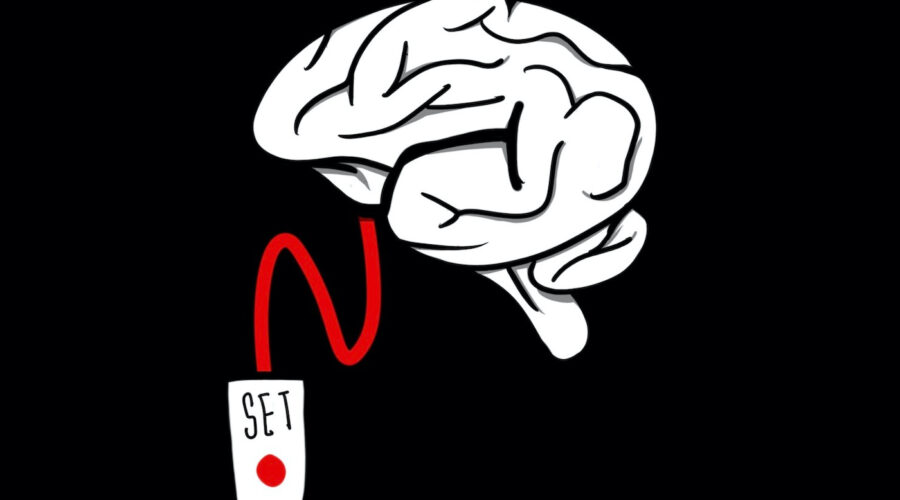I Read Every Neuroscience Study On Psychedelics Published Since 2017. Here’s What I Learned
August 31st 2021 was the moment I read every neuroscience study on psychedelics ever published dating back to 2017.
With a ridiculous six-hour schedule nearly every day for months, I took meticulous notes on each study.
I thought I knew about psychedelics — I even got a graduate degree that says I do. But after obsessively reading every neuroscience study written in the past five years, it’s safe to say my understanding of the brain and psychedelics is the highest it’s ever been.
Interested in joining a Psychedelics Clinical Trial? Sign up here now and we will connect you with a clinical trial in your area when one becomes available.
If I were in X-Men, my mutant power would be the ability to match scientists with the date, university affiliation, study title, and summary of the study with pinpoint accuracy. I would also be the worst superhero imaginable.
This article would be entirely too hefty if I covered every study. Besides, you don’t want to read it all. Some of it isn’t that interesting, or it’s based on redundant topics you may already know.
The terminology for most of these studies are pretty intense, including words like fluorodeoxyglucose, intracranial self-stimulation, arterial spin labeling, cultured neuronal networks, intracerebroventricular injection. It’s all unnecessary if you’re just looking for a brief summary.
So how do we squeeze five years of psychedelic neuroscience studies into a single article?
RELATED: What’s The Difference Between MDA And MDMA? We Explain
There Are Four General Themes Of Psychedelics
If every psychedelic study was placed in an algorithm (or thrown into a juicer), what would emerge are four distinct general themes of psychedelics. These themes can be applied to nearly all studies from 2017 to 2021, and all four of these themes are active areas of research in an array of scientific fields.
You can either read this brief, or lock yourself in a room for months, alienate your friends, and discard your social life while taking notes on hundreds of psychedelic research papers. Your choice.
Theme 1: Serotonin Activation
I’ll leave it to the active psychonauts to define what a psychedelic is and what it is not.
Generally, psychedelics fall into the category of serotonergic agonists, which means when you take them, the substance increases serotonin transmission and binding in specific serotonin (5-HT2A) receptors (and occasionally with other related 5-HT receptors). In short, your brain releases serotonin, which is a neuromodulator produced naturally that is often associated with alterations in mood, behavior, stress, and a balance of cognitive-emotional homeostasis. It’s not a neurotransmitter because the neuromodulator only modifies neurons (brain cells) that have 5-HT2A receptors.
How serotonin implements its effects on these neurological and biological systems is still being actively studied. The working theory is that psychedelics allow for not only the release of serotonin, but also increases the quantity and timespan serotonin stays within an area known as a synaptic cleft.
The Synaptic Cleft
The synaptic cleft is where neurotransmitters and neuromodulators (along with other molecular compounds) go to do a bunch of things. But, mostly, they arrive in the synaptic cleft in hopes of creating an “action potential”, which is a green light for the neuron to fire (activate) or to not fire. We’re talking about millions being activated through a rush of serotonin in these synaptic clefts. Not all neurons with exposure to serotonin become activated. However, the probability of activation generally increases when the amount of serotonin in the synaptic cleft is increased.
For example, there’s a chance you won’t get a full house playing your first game of poker. However, play the game millions of times and the amount of Full Houses you get will increase. The probability in a poker game is the same probability that may or may not get your neurons to activate from psychedelics.
Serotonin And The Brain
All serotonin in your body comes from a single part of the brain, the dorsal raphe nucleus — a small area in the back part of your brainstem. This increase in serotonin usually targets certain brain networks that we will dive into later. By activating or deactivating these networks, the subjective experience of psychedelics occurs — or “the trip”.
We have also seen a correlation with serotonin activation and the alleviation of depression, anxiety, stress-related behavior, PTSD, and addiction to name a few. All of these cognitive improvements are undoubtedly an area of active research for scientists.
There are psychedelics that aren’t serotonergic agonists. One of which is ketamine, since it functions as an NMDA antagonist.
The way NMDA receptors work is a bit more complex than serotonin, and some argue that ketamine is not a psychedelic — although it seems to have the same beneficial effects on cognition as classic psychedelics (serotonergic agonists like LSD, psilocybin, MDMA to name a few). However, the persistence of NMDA antagonists like ketamine is still up for question.
RELATED: The Conundrum Of Microdosing
Theme 2: Dose Dependency (i.e. Microdosing Doesn’t Work)
This may not seem revolutionary, but it’s a big thing in neuroscience studies. Psychedelics seem to work on a dose-dependence basis — the more you take, the stronger the subjective and neurobiological effects become.
This unique property of psychedelics seems to be governed by Fechner’s Law, which is a formula that determines the level of stimuli required for a person to feel a particular sensation. It’s a complex theory with lots of mathematical formulas and strange characters. But it proposes that a trip operates on a logarithmic basis.
If psychedelics worked on an exponential function, or a 1:1 basis, the potency of psychedelics would double as the amount doubles. The experience of eight grams would be exactly twice as strong as the experience from four grams. However, this is not necessarily the case.
Fechner’s Law
Fechner’s logarithmic law is everywhere in neuroscience studies, including the perception of sound and light. Interestingly enough, this law collapses when there is an insufficient amount of stimuli going to a person.
In the case of psychedelics, Fechner’s law can not apply if there is not a sufficient amount of stimuli, or psychedelic, a person is consuming. This brings us back to the idea of psychedelics being dose-dependent — a person must take enough in order for the body to “feel” the psychedelic.
With microdosing, we see the true nature of dose-dependency at play. Microdosing is when someone consumes 1/10th to 1/20th of a “full” dose of psychedelics. The claim is if a person takes one of these fractionated pieces roughly once a day, over the course of a few weeks, that person will have all the cognitive benefits associated with psychedelics. These include things like a decrease in anxiety and less stress-like behavior.
While many have proclaimed microdosing to be a game-changing daily activity, the science behind psychedelics just doesn’t support these claims.
Imperial’s Study in Microdosing
In the beginning of 2021, the largest psychedelic study ever conducted took place at Imperial College London. In the study, led by Balázs Szigeti, 200 participants either received a microdose amount of psychedelics (LSD or psilocybin) along with a placebo, which is an inactive substance. Over the course of a few weeks, participants took the substances, recording how they felt afterwards.
What researchers at Imperial College discovered was that microdosing works as effective as placebo. In some instances, the placebo worked better than microdosing psychedelics.
Saying “it was all in their head” is a pretty dismissive statement. The effect of placebo illustrates the immeasurable power of the human mind on regulating our own happiness and cognitive homeostasis.
This study, along with many others across the world, depict psychedelics’ dose-dependency nature, as well as dependency on a particular substance.
Microdosing just won’t cut it, despite the number of “certified” microdosing coaches claiming otherwise.
Theme 3: Relationships With The DMN And CEN
I’m sure you’ve read my article on Healing Maps regarding brain networks like the DMN and CEN. If you haven’t, you’re partially disappointing me.
Along with the typhon of neurological activity that happens in the brain when a person takes psychedelics, two distinct brain networks do somewhat of a dance inside your head when you trip. These networks are the Default Mode Network (DMN) and the Central Executive Network (CEN).
You’ll often see the CEN referred to as the Fronto-Parietal Network (FPN) and the Task Positive Network (TPN). It’s important to note that it’s the same thing. Science has a weird habit of giving the same thing multiple names — a weird flex that one must accept.
Understanding How The DMN And CEN Function
Activity in the DMN is associated with idle behavior, like sitting around, meditating, staring off into the distance. Sounds pretty boring, but it’s estimated that roughly 80 percent of a person’s life happens within the Default Mode Network. In reality, it makes all of our lives pretty boring.
In contrast, when the brain activates the CEN, it means a person is doing a cognitively demanding task. This includes things like reading a book, opening a lock, or following directions on a map. When our brains are in the Central Executive Network, we’re usually doing something — which makes not doing something pretty hard to do.
This is why these two brain networks have an “inverse relationship”, meaning that, as activity of one increases, the activity of the other decreases.
This inverse behavior between the DMN and CEN is pretty consistent. But when a person takes psychedelics, these networks tend to get a little sloppy.
While tripping, the DMN becomes active, communicating with parts of the brain that it normally doesn’t talk to. This includes the CEN. This behavior isn’t exclusive to the DMN; the CEN also starts communicating with parts of the DMN it normally doesn’t interact with.
This Still Confuses Many Researchers During A Neuroscience Study
Neuroscience studies don’t fully understand why this happens, or the greater implications in regards to the effects of psychedelics. However, the relationship between the DMN and CEN tends to get messier as the amount of psychedelics increase. Once again, this shows off its property of dose dependency.
The amazing thing is this unique feature of the DMN and CEN occurs with all psychedelics, including ketamine, which doesn’t rely on serotonin receptors. This shows us that these neuromechanical processes, the dance the DMN does with the CEN, is not dependent on serotonin receptors.
It’s an interesting find that may ultimately lead to lifetimes of psychedelic research.
Theme 4: Unexplainable Perception Changes
Perhaps the most juicy of all these general rules of psychedelics: We still don’t know why we trip.
In the past few decades, we’ve been amassing pieces of the scientific puzzle of a psychedelic trip: Serotonin receptors, DMN/CEN interaction, a potpourri of neuroimaging scans. All of these components are important for understanding the brain’s ability to process these substances.
However, no one has identified the exact neuromechanism(s) that lead to a psychedelic trip. Of course, there are some intriguing theories.
The ‘Thalamic Sensory Gating’ Theory
In 2008, Mark Geyer of the University of California San Diego introduced the theory that the thalamus may be a key component in perceptual alterations that are often associated with tripping on psychedelics. Exaggerated colors, bizarre facial distortions, spatial reconfiguration of the environment around us. All of this could be due to something called “thalamic sensory gating” in your brain.
Every person has a thalamus deep in the brain, sitting between the cerebral cortex and midbrain. It’s a part of the forebrain, an area of the brain that evolutionary is the most recent addition.
The thalamus is like the relay station for reality. All sensory information you perceive in this world (aside from smell) sits in the thalamus before other parts of the brain process the information. Everything you’ve seen or heard since you’ve been on Earth goes straight to your thalamus. In fact, the thalamus knows reality before you know your own reality.
One of the reasons we know the thalamus is vital to consciousness is because any injury or lesion in the thalamus can cause a coma — the opposite of being conscious. It’s also part of the DMN, and, while under psychedelics, the thalamus operates in interesting ways.
A Supporting Neuroscience Study About The Thalamus
In 2017, Felix Müller confirmed what Geyer proposed nearly a decade before: The thalamus plays a vital role in facilitating visual and auditory alterations and hallucinations during a psychedelic trip.
Muller discovered this through an fMRI study. This is a form of neuroimaging that uses the magnetic resonance of blood flowing in the brain to determine activity in certain regions. In this study, regions of interest (ROI) across the entire brain were selected to determine its resting-state functional connectivity (RSFC) with the thalamus.
Lots of big words, but RSFC is utilized to see how one part of the brain communicates with another part when a person is idle and not doing any cognitive-demanding tasks. Out of the 130 regions of interest that were selected, 104 of them increased connectivity with the thalamus while a person was under 100 micrograms of LSD — or about one tab.
This is remarkable data. In fact, it may be one of the most important neuroscience studies on psychedelics to date. The thalamus has an undeniably large role in facilitating perceptual changes during a trip.
RELATED: Want To Join a Psychedelic Clinical Trial or Study? Here’s What You Need to Know
Ignoring The Common ‘Darkness’ In Future Neuroscience Studies
Here’s a common theme with science in the psychedelic field: We don’t know, then we do know, then we know more than we previously knew. This all opens up more things that we don’t know.
Carl Sagan famously said that science is like a candle in the dark. It’s a great metaphor that elicits the visual of a candle illuminating a dark, cavernous space. The candle lights our way as we progress through what psychedelic science has to offer. Unfortunately, it also shows the darkness surrounding it.
This darkness that “haunts” psychedelic science is essentially the same darkness that has threatened science for generations.
It forced Galileo Galilei to be placed on house arrest for the rest of his life after promoting heliocentrism (the idea that earth revolves around the sun). It’s the same ignorance that misappropriated Charles Darwin’s theory of evolution and let it be used for nefarious means. The same darkness that Carl Sagan famously discussed in A Demon-Haunted World.
It’s important to discuss what we know in psychedelic science. It’s also equally important to identify and discuss what we don’t know.
My Conclusion After Reading Every Neuroscience Study On Psychedelics Since 2017
Comprehensively reading five years worth of neuroscience studies on psychedelics revealed many things to me. Arguably, the most obvious: We’re in the dark when it comes to fully understanding how and why psychedelics affect humans.
The information that we do know regarding psychedelics has been the direct result of strenuous research. This comes from dedicated scientists, not new-age pseudoscience gurus or microdosing coaches.
In the psychedelic renaissance that we all find ourselves in, be cautious. It’s easy to believe something is true because we want to believe it to be true. However, it’s harder to abandon a belief when presented with new information.
Clinic Spotlight: Psychedelic Journeys – Tulum, Mexico




Ian
February 1, 2022 at 4:11 amI find it hard to read the text in the colors used. Light gray text on a lighter gray background was very popular among web designers 10 years ago, but despite its artistic merits it decreases readability on many monitors (mine in particular.) My eyes struggle to perceive the text, and I would rather focus my cognitive effort on the very interesting ideas you present.
So, I wonder — could you please find a way to make the text darker? Nearer to black would be perfect. I’m sure many other readers would benefit, even though they may not be conscious of this detail.
Rib
February 4, 2022 at 4:38 pmThis is excellent. I have been a researcher in this field for the last 10 years and it is really hard to get perspective sometimes. You have a fantastic ability to understand and crystalize information and to be able to present it in an way that makes a new understanding for the reader. I agree with every point you have made. I am sure you will do amazingly in your future studies.